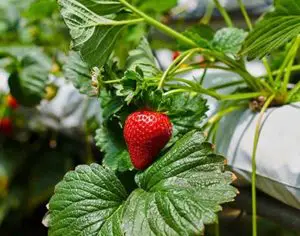“What can I grow?” is one of the most common questions beginners have about hydroponic gardening. Hydroponic crops can grow in the right setup with ideal conditions and nutrient-rich water. In hydroponics, only specific types of plants are effective, as opposed to traditional soil farming. The following factors should be considered when choosing which plants would be suitable for your hydroponic system: the type of system you have or wish to build, your experience, and why you consider hydroponic growing.
The Type Of Hydroponic System
 Hydroponic systems can be classified into two types: Solutions, or Liquid Culture, and Aggregates, or Medium Culture. The plants grow directly in nutrient-rich solutions, such as those found in Aeroponics and Nutrient Film Technique systems. These systems work best for plants that grow rapidly and have shallow roots, such as lettuce, spinach, and radishes.
Hydroponic systems can be classified into two types: Solutions, or Liquid Culture, and Aggregates, or Medium Culture. The plants grow directly in nutrient-rich solutions, such as those found in Aeroponics and Nutrient Film Technique systems. These systems work best for plants that grow rapidly and have shallow roots, such as lettuce, spinach, and radishes.
Unlike top-down systems, medium-based systems use a growth medium like coconut fiber, gravel, sand, peat moss, or Hydroton. Consequently, these setups are good for a heavy plant, such as comfrey, chicory, and beets, or heavier crops needing support, such as beans, tomatoes, squash, and cucumbers. Hobbyists and commercial growers alike have cultivated a wide variety of tomatoes using hydroponics.
The type of plant you intend to grow can provide insight into what kind of hydroponic setup you should select if you don’t yet have one. The D.I.Y. Wick System may be easier to use if you cherish fresh salads and a continuous supply of your favorite leafy herb but only have a limited amount of space. With a wick system, root vegetables like carrots and turnips will not thrive. Aeroponics may appeal to you if you are somewhat experienced and seeking a new option that is more exotic than hydroponics or if you are looking for a more high-tech system than hydroponic farming.
Available Space
Space is a big factor in considering which hydroponic plants to grow. Squash, melons, vining plants, and other larger plants are best avoided if you only have a small garden area. Even if you can grow these plants in a small area, you will never get the same quality fruits and hydroponic vegetables as plants with ample space to grow. Leafy greens and fresh herbs are the easiest and most rewarding choices for small systems. A plant with rapid growth can be harvested continually and does not require a large space to develop or expand. Plants that don’t adapt well to hydroponics are root crops that require space to bloom and grow.
You can upgrade to a more advanced system if you have a large vertical space, such as a greenhouse, garage, or patio so that you can grow plants that need trellises and deep plant roots. It’s easy to experiment with large gardens–you can plant multiple varieties of the common vegetables and fruits you enjoy.
Experience Level
What plants you choose to grow will also depend on your gardening experience and your reasons for getting into hydroponic production. For novice hydroponic growers, it is advisable to stick to plants that grow quickly and are easy to maintain so that you can maximize your experience without becoming discouraged. When you learn the basics, hydroponic gardens are simple and easy to maintain, but you may get discouraged if you begin with an overly complicated system. You should monitor the pH and nutrient levels in your hydroponic solution continuously, and you should drain and replace the nutrient solution if necessary. If you wish to grow an indoor garden, be prepared to purchase some grow lights as an alternative to natural light. Since they have been growing in soil-less systems for years, experienced growers have enjoyed excellent crop yields.
Indoor hydroponics is one of the most exciting forms of gardening, especially for those with experience and those who want to experiment with more exotic and complex plants. Even whole nut trees or fruit trees can be grown hydroponically by some gardeners. There is no limit to what you can achieve if you have enough garden space and the desire to experiment. Quince, tobacco, large melons, sunflowers, pumpkins, and honeysuckle or blackberries are some of the more experienced gardener’s favorites.

